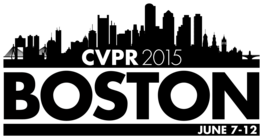-
Towards Open World Recognition
AbstractWith the of advent rich classification models and high computational power visual recognition systems have found many operational applications. Recognition in the real world poses multiple challenges that are not apparent in controlled lab environments. The datasets are dynamic and novel categories must be continuously detected and then added. At prediction time, a trained system has to deal with myriad unseen categories. Operational systems require minimum down time, even to learn. To handle these operational issues, we present the problem of Open World recognition and formally define it. We prove that thresholding sums of monotonically decreasing functions of distances in linearly transformed feature space can balance open space risk and empirical risk. Our theory extends existing algorithms for open world recognition. We present a protocol for evaluation of open world recognition systems. We present the Nearest Non-Outlier (NNO) algorithm which evolves model efficiently, adding object categories incrementally while detecting outliers and managing open space risk. We perform experiments on the ImageNet dataset with 1.2M+ images to validate the effectiveness of our method on large scale visual recognition tasks. NNO consistently yields superior results on open world recognition.
Related Material
[pdf] [video][bibtex]@InProceedings{Bendale_2015_CVPR,
author = {Bendale, Abhijit and Boult, Terrance},
title = {Towards Open World Recognition},
booktitle = {Proceedings of the IEEE Conference on Computer Vision and Pattern Recognition (CVPR)},
month = {June},
year = {2015}
}
These CVPR 2015 papers are the Open Access versions, provided by the Computer Vision Foundation.
Except for the watermark, they are identical to the accepted versions; the final published version of the proceedings is available on IEEE Xplore.
Except for the watermark, they are identical to the accepted versions; the final published version of the proceedings is available on IEEE Xplore.
This material is presented to ensure timely dissemination of scholarly and technical work.
Copyright and all rights therein are retained by authors or by other copyright holders.
All persons copying this information are expected to adhere to the terms and constraints invoked by each author's copyright.

